Join the tribe of Movement & Calisthenics Athletes – people just like you that are working with their own body weight to get strength, lose fat build muscle, recover from injuries and live their best lives!
There is a lot of information out there about how long you need to work out to see results. Some people say that you only need to work out for a few minutes each day, while others say that you need to put in hours at the gym.
So, what’s the truth?
How long do you really need to work out to see results?
There is no one-size-fits-all answer when it comes to how long you should work out. It depends on your specific goals and the type of exercise you are doing. However, a few general guidelines can help you figure out how much time is right for you.
This article will discuss the different factors that play into how long you should work out to see results. We will also provide some tips on how you can stick to a workout routine and make sure that you are getting the most out of your workouts! Let’s get started!
💥Factors affecting your workout duration
What is your main goal?🎯🎯
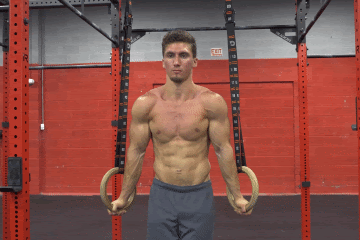
Ring turn in’s and out’s are amazing for upper body strength development.
The first priority is to determine your main goal. Are you trying to lose weight? Get toned? Build muscle? Improve your cardiovascular health? Learn specific calisthenics skills? Once you know your goal, you can start to figure out how long you need to work out.
For example, if you are trying to lose weight, you will need to focus on both cardio and strength training. Cardio will help you burn calories and fat, while strength training will help you build muscle. It’s not ideal for sticking to cardio alone as you will lose fat in the process. How long you need to do each will depend on your individual goals and skill level.
Check out: 📍 4-Week Workout For Losing Weight Using Bodyweight.
If you are trying to build your muscles, you will need to focus on strength + hypertrophy training. How long you need to work out will depend on the intensity of your workouts and the amount of muscle you want to build.
Check out: 📍 How to Build Muscle Mass Using Bodyweight Only
If you are trying to improve your cardiovascular health, you will need to focus on cardio. How long you need to work out will depend on your current fitness level and the intensity of your workouts. When improving your cardio, there are also different protocols such as steady-state vs the popular high-intensity interval training (HIIT). Both exercise protocols are highly effective in building endurance. However, HIIT can produce the same effects in a matter of 8 minutes! Here’s a sample of our 20-Minute HIIT Workout.
Check out: 📍 Calisthenics Cardiovascular Workout
As you can see, different goals require different workout protocols. There is no one-size-fits-all answer when it comes to how long you should work out. The best way to figure out what works for you is to experiment and find a routine that you enjoy and that fits into your schedule.
There are also other training protocols, such as circuit training which affect your overall training time. However, this also affects other factors of training. You can read more about circuits here: 📍 Everything You Need to Know About Circuit Training,
Your skill level 🤸
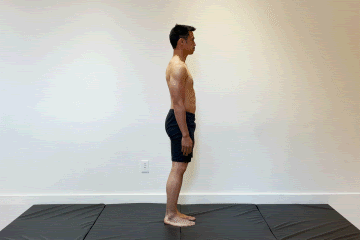
Lunge skips can be intense cardio work for more advanced athletes.
Your starting skill level also affects the duration of your workout. Beginners tend to have a lower working capacity so shorter workouts are necessary to start with.
On the other hand, people who have been working out for a while can handle longer workouts because their bodies are already accustomed to it. How long you need to work out also depends on how much time you have to devote to working out and again, your training goals and protocols.
Rest periods ⏰
Exercise sets usually last around 30 seconds to 1 minute. Another factor that can affect duration is your dedicated rest period. Based on your workout goal, rest in between sets can range from 30 seconds to even five minutes.
The length of your rest period will depend on the intensity of your workout. If you are working out at a high intensity, you will need more rest in between sets.
On the other hand, you can take shorter rest periods if you are working out at a lower intensity. Here’s a general overview of rest periods:
3 to 5 minutes – Strength and skill training
60 to 90 seconds – Hypertrophy training
30 seconds or less – Endurance training
For more help on rest periods, you can read this article: 📍 How Long Should I Rest in between Sets?
🧐What you should focus on☝️
🧐What you should focus on☝️
How hard is your workout 💪
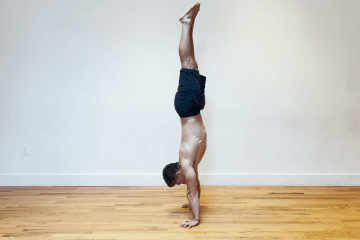
Freestanding handstand push-ups definitely belong to more advanced exercises, but it can STILL be TOO EASY for you if you are very strong with the exercise.👊
Intensity is how much effort you exert in a given exercise.🤜High intensity means that you’re exerting much effort to execute the movement. This results in fewer reps but is still challenging due to the difficulty of an exercise.
Intensity plays a huge factor in keeping your workout progressive. If you’re not challenging your body, then you will not see results. How long you need to work out also depends on the intensity of your workouts.
If it’s too easy for you, there’s no sense doing 12 reps of regular push-ups. You need to move into a higher push-up progression to really see results. The same goes for any type of exercise you’re doing.
You need to make sure that you are challenging your body in order to progress.🏆
Training volume🔥💪
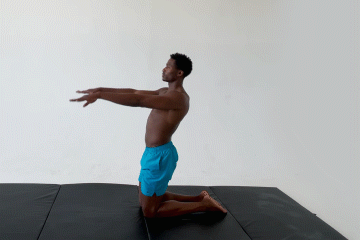
Isolation exercises such as the quad extension are excellent for adding training volume.
Speaking of reps and sets, volume is another factor that affects your progress. 👉Training volume is the total number of reps and sets that you do in a workout.
The more volume you do, the more work your muscles are doing. The more work your muscles do, the stronger and bigger they will get. How long you need to work out also depends on how much volume you’re doing.
If you’re only doing bodyweight, you might need a higher volume, especially if you’re limited with calisthenics equipment.
Training frequency👊
Along with training volume is training frequency. This refers to the number of workouts you’re doing in a week. How long you need to work out will also depend on how often you’re working out.
Hitting a muscle 💪 two times per week is a good guideline to see results. From there, you can increase the frequency as you get more comfortable with working out. The key is not to overdo it and to listen to your body.
If you’re feeling too sore or too tired, then take a day off or two. You don’t want to burn yourself.
Here’s an article that answers the question, 📍 “Can I workout every day?”
There are two ways to structure your workout in a week. The first one is performing full-body workouts and the other is split.
🤸Full-body workouts are when you target all the muscle groups in your body in one workout session. A split is when you break up the muscle groups and target them on different days.
The advantage of full-body workouts is that you can do them less frequently since you’re working for every muscle group. The disadvantage is that you might not be able to increase its frequency and it DOES take a longer period of time to finish each session.
Splits have shorter training sessions because of the fewer muscle groups you are hitting. This also means that you can work out different muscle groups the next day so you can get more workout sessions per week.
More on that topic here: 📍 FULL-BODY WORKOUT vs SPLIT TRAINING: Which one is best for you?
Point of diminishing returns: How long a workout is bad?😢
The overall duration of the workout isn’t much of a factor, but the workout’s quality is.
PROGRESSIVE OVERLOAD is what you should be aiming for. Make each session harder than the previous one, even just a little bit.
The longer the workout isn’t always the better. The shorter it is isn’t always the better. The best workout is the one that hits the perfect balance for you and challenges your body to stimulate adaptations.👍
🔎How do you find this balance? You have to try different workouts and adjust protocols and factors such as the ones above to see how your body responds.
If you feel like you need more time in a certain muscle group, then add more time for it. If you’re feeling too tired, then cut back on your workout time and focus on recovery.
Remember that fatigue can come from your workout BUT there are also other stressors that can affect your recovery. Your everyday life (may it be from your work, business, relationships, environment) can affect your recovery from your workout. If that’s the case, GET SOME REST.
✨Tips for rest periods:
Rest periods usually make up the bulk of your workout, especially with strength exercises that require around 3 to 5-minute rests.
The long rest periods aren’t bad. It has a purpose to let your muscles and nervous system recover for the upcoming high demands of the next set. BUT what you do during those rest periods may impact your overall training performance, hence negatively affecting your gains.
Resting feels boring, 😢 but it is VITAL for strength and muscular development. Unfortunately, it’s easy to get distracted by all the stimuli you have in the gym or home during these seemingly long periods.
Stay focused during rest.💯 A recent 2020 research shows that best visualization has positive effects on strength training. While visualization practice was performed outside of training in the research, you can still take your rest in between rests to visualize your upcoming set and assess your previous one. This way, you still retain your focus in your workout.
📌Take away:
Focus on more important matters that affect your training, such as training volume and rest periods, rather than just knowing how long you can finish your workout.
If you’re not training for endurance, then your workout duration isn’t going to matter as much.
🔥Training quality > training quantity and/or duration.
💯 If you want to see results, make sure that you are progressive overload and focus on the quality of your workout. With that being said, find what works best for you and stick to a routine.
And finally, you can get more high-quality workouts if you follow a PERSONALIZED program. 👊 Personalization minimizes the risk of injury at training stagnation. If this is something you’re interested in, begin your journey with a short assessment know your body’s strengths and weaknesses.🏆🏆
TAKE THE ASSESSMENT NOW!
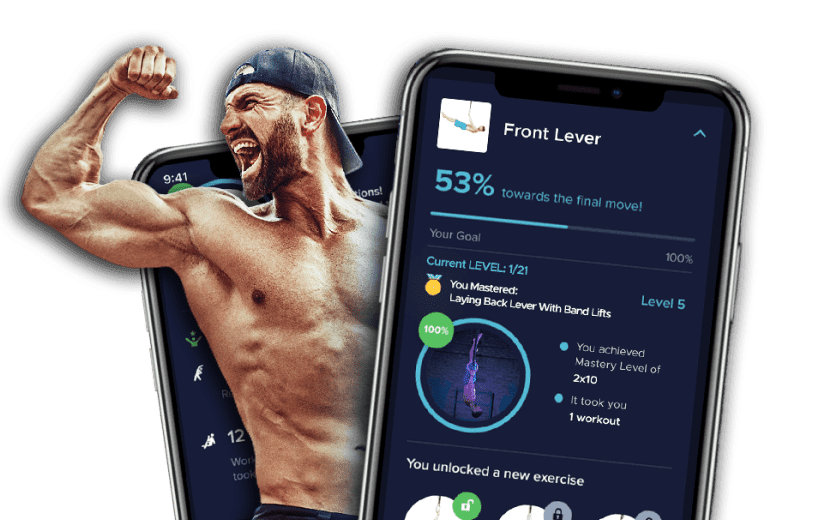
UNSURE HOW TO GET STARTED
Get a FREE personalized plan here
(No strings attached)